Notes From Don Pedrillo
Wedding at San Baltazar
For three days beginning on July 25th Beth and I celebrated the wedding of a dear friend's daughter in San Baltazar. We first met Epifanio, his wife Paula, and their eight children back in 1994. How frustrating it was trying to communicate with our very limited knowledge of Spanish. Needless to say our pocket translators were well used. Added to the problem was Paula's inability to speak Spanish. It would be years before she spoke outside of her native Zapotec. Beatrice, the bride, was three years old when we first met her. Through our twice a year trips down to Oaxaca we got to see her grow into the beautiful young lady that she now is.
Beatrice and Marcos
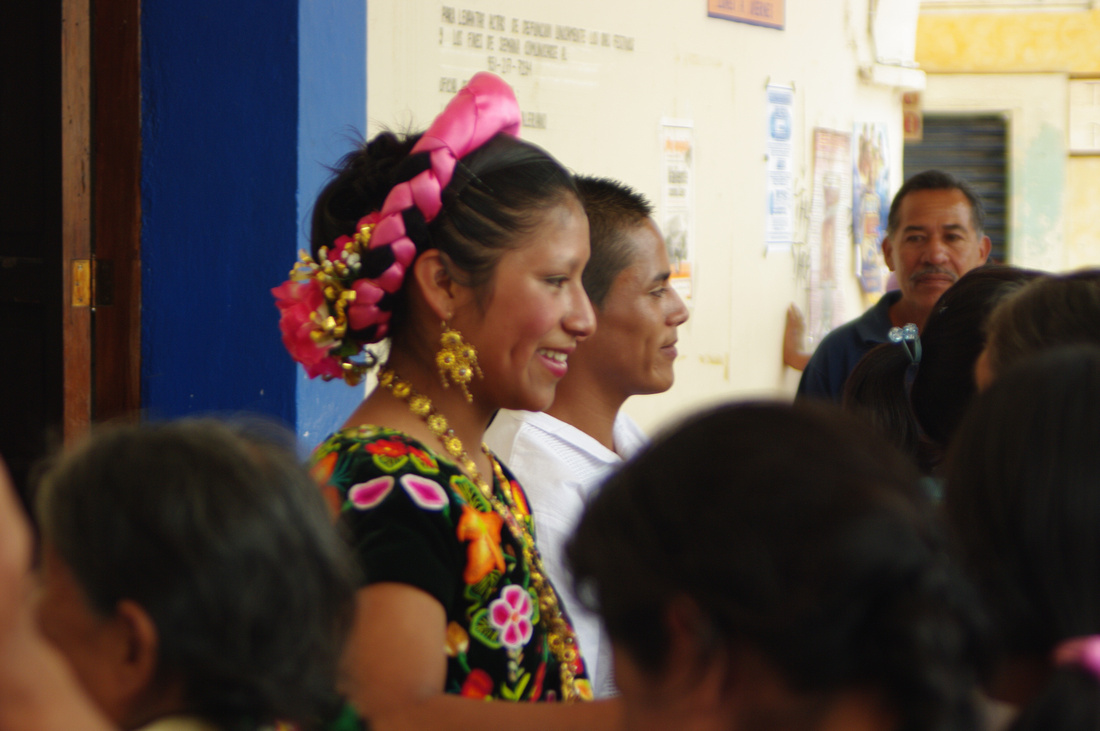

As Beth and I now have a home here we eat more traditional American meals. Three days of Oaxacan food was a little rough. In Mexico when an animal is killed it is eaten immediately so the flavor is much stronger than in the States. Also many foods are heavy on spices and chilies. It's kinda like a natural laxative.
Epifanio and his family are Seventh Day Adventist, consequently, missing at the celebration was the presence of any hard liquor, (a rarity here in the valley). Usually extended celebrations include lots and lots of drinking of mostly Mezcal.
A couple of weeks after the wedding, Jacobo, Beatrice's brother, came to our house to do some brick work. During lunch Beth and I were horrified as Jacobo related Beatrice's new living conditions. The groom was from Mitla so the two are now living there. They reside in a one room home made of sheet metal. The floor is dirt. There is no running water so drinking water is carried in and bathing is done, (not so privately), in a nearby river. Meals are taken in the standing position as they have no chairs. A good nights sleep is hampered by the constant scurrying of rats around the room.
A few days after our conversation with Jacobo three couples came to our home to visit. As we talked I mentioned in detail Beatrice's new living conditions. After I had finished I was surprised at the so-what looks I received. It turns out they all began their married lives in a similar manner. They saw nothing unique about Beatrice's life. I had some hard times growing up and remember starting out with little. My new perspective on "little" has shown me just how fortunate I have been. It's comforting to know that Beatrice is going to be fine. She and her husband will spend their lives working and making life for themselves and their future children as comfortable as they are able. They will grow up as fighters and will be proud of their accomplishments.
I remember when America was more that way! Today in America they would be considered victims along with the other several other million that have been given that label. How strange that millions of Mexicans pass through life working hard and expect little from their government. Many Americans seem to feel they are unable to survive without government. In Mexico going without means that you haven't used your mind or your back sufficiently to obtain what you want. In America somehow the government hasn't done it's job if you lack for anything.
The other day Beth and I took a walk East of our home. We passed by a well that is fed by an underground spring. Not too many years ago women from the surrounding villages came to the well to wash clothes. Dipping water from the well was much easier than drawing water from their deep wells a bucket at a time. Flat rocks surround the well to accommodate washing clothes. A major change here in the valley is most villages have a communal well. The water is pumped to a cistern and gravity fed to each home. This doesn't mean there is water in the house. Most faucets are in the yard where water is drawn for cooking and cleaning. Running water in a kitchen is almost unheard of. More and more people have updated to a more modern bathroom. More often than not these modern bathrooms entail having a faucet near by to fill a bucket to pour into the toilet to flush it. This means that they have installed some type of septic tank. Many kitchens here are separate structures away from the home. They are usually covered, have a gas stove, a local made wooden table, a way to cook with fire wood, and multiple multicolored plastic buckets filled with water to prepare food and clean.
Our walk provided us with a view of our home that we normally don't see.
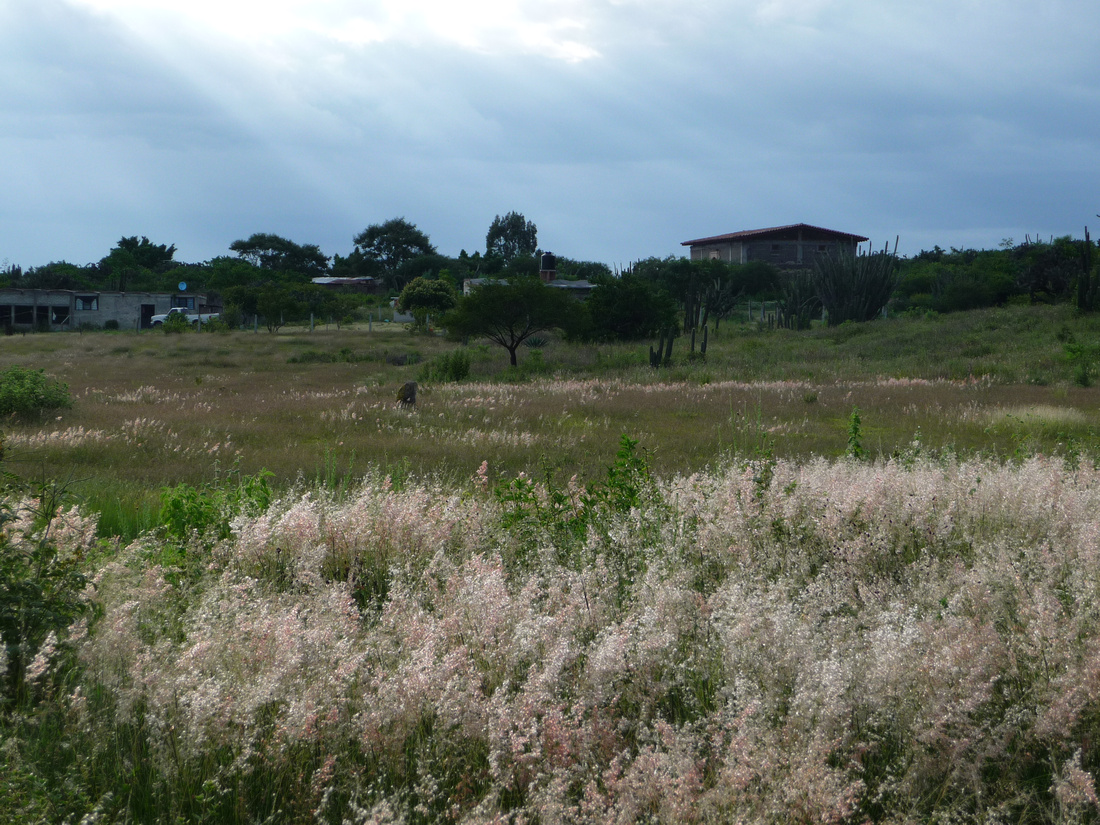



Last week we took a ride to Xaaga, (pronounced Saw-gah), to see the sister Hacienda of our home. It too was built in the late 1600s. The Xaaga Hacienda is owned by the village and there is talk of restoring the site as a tourist attraction. The village is largely inhabited by ancestors of the people who worked at the old Hacienda. For that reason Zapotec is not spoken. The Spanish insisted that Spanish was the spoken language. What a treat it is to view structures that are over three hundred years old. While Beth and I enjoy the remaining structures of the Zapotec people we find the Spanish archaeological remains much more interesting. I suppose it's because they are more intact and there is less conjecture as to how they lived.
Here is Beth and I in front of the Xaaga Hacienda



 More pics of the Xaaga Hacienda can be found at http://edeese.zenfolio.com/p148421161
More pics of the Xaaga Hacienda can be found at http://edeese.zenfolio.com/p148421161
Wash Day at Don P
Another step forward today when we hooked up our washing machine and did our first load. For the past two months we have been taking our dirty clothes to a "lavanderia" at about $15.00 per week. This morning Everette ran the electric out in the patio to the washing machine and beyond. Then we hooked up the drain and the intake hoses for water to the washer. While the machine completed it's first load, we strung cable across the patio to hang up the clean clothes. While still in Brownsville, we had decided not to purchase a dryer. We have the time to wait for our clothes to dry and we prefer not to use the extra electricity. (We got our first electric bill for two weeks and it was about $4.50!) So, now our first load is drying out there. Each advancement feels great!
Photos of Don Pedrillo
As I mentioned yesterday when we purchased Don Pedrillo in 1994 it consisted of only four adobe walls and four columns. Here are some photographs that show it's condition at the time of purchase. Because the structure had set for so long the top of the adobe walls and the columns had become soft from the years of exposure. You can see that plants were actually growing on top of the columns and especially on top of the walls.





 The first task was to remove all the plants. It was determined that several feet of the columns and walls needed to be removed down to a level that was still stable. You can see in the picture below how the roots had penetrated down into the the walls.
The first task was to remove all the plants. It was determined that several feet of the columns and walls needed to be removed down to a level that was still stable. You can see in the picture below how the roots had penetrated down into the the walls.


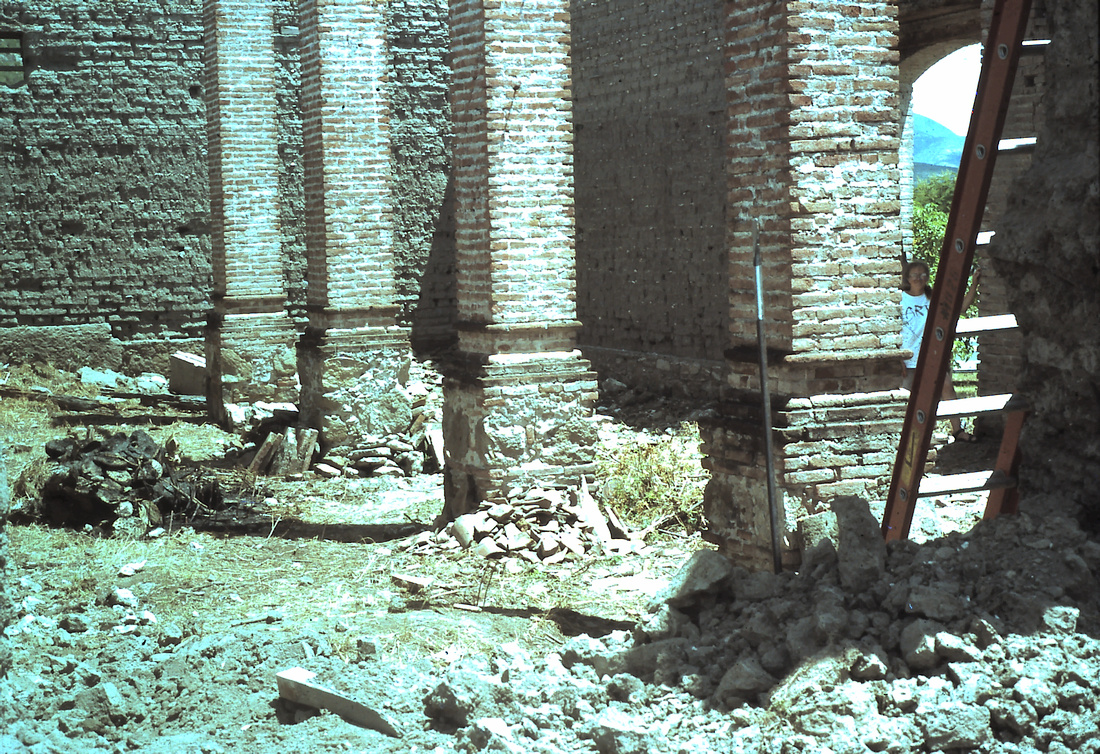

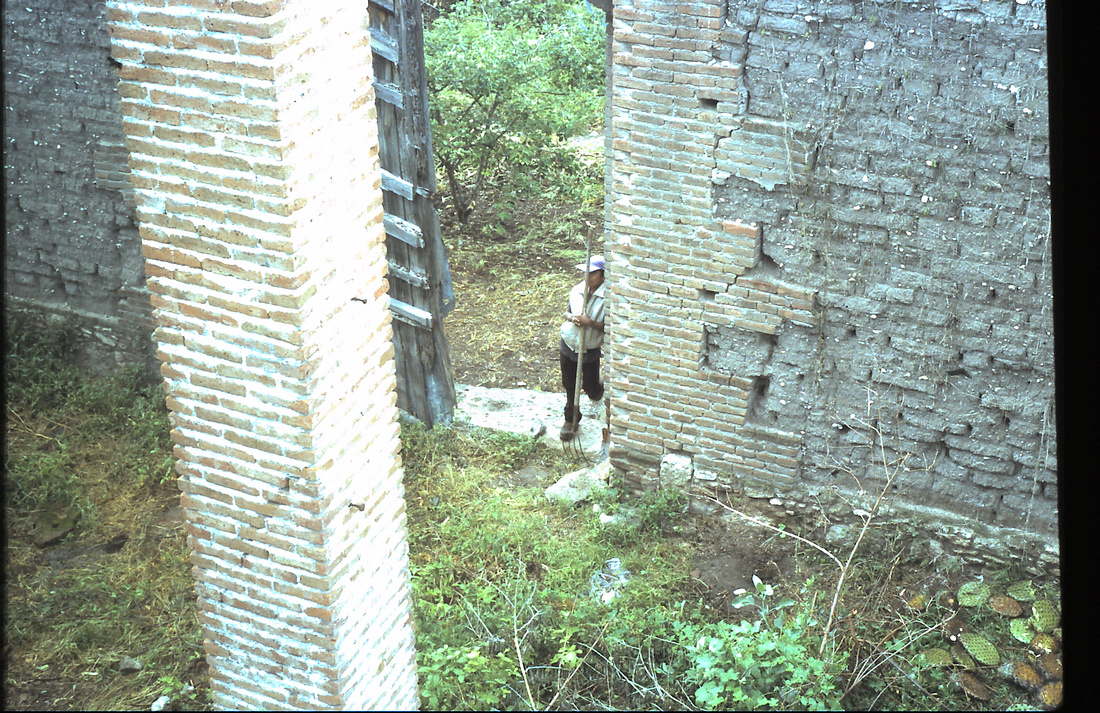
 The walls being three feet thick provided a relatively safe work environment. Cutting the columns down was a little trickier. The columns were put together with a lime mixture. No cement in those days. I have always been amazed that when you eyeball down the columns standing on the ground they appear to be perfectly aligned. Incredible considering the tools they possessed or didn't possess over three hundred years ago.
The walls being three feet thick provided a relatively safe work environment. Cutting the columns down was a little trickier. The columns were put together with a lime mixture. No cement in those days. I have always been amazed that when you eyeball down the columns standing on the ground they appear to be perfectly aligned. Incredible considering the tools they possessed or didn't possess over three hundred years ago. 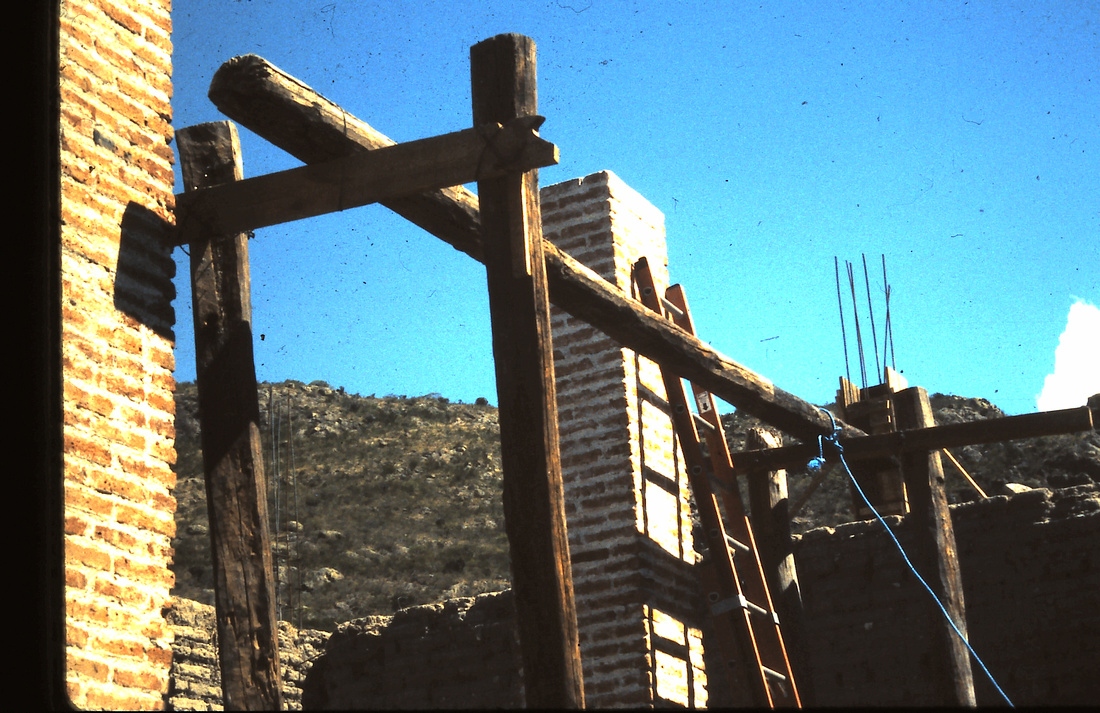







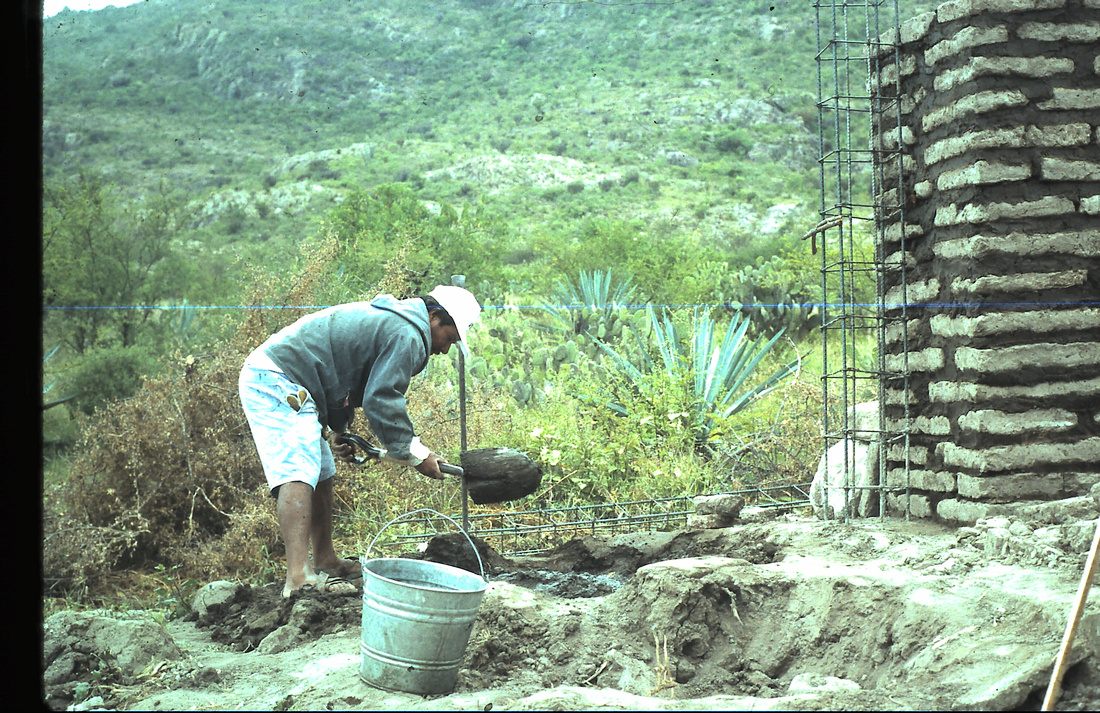

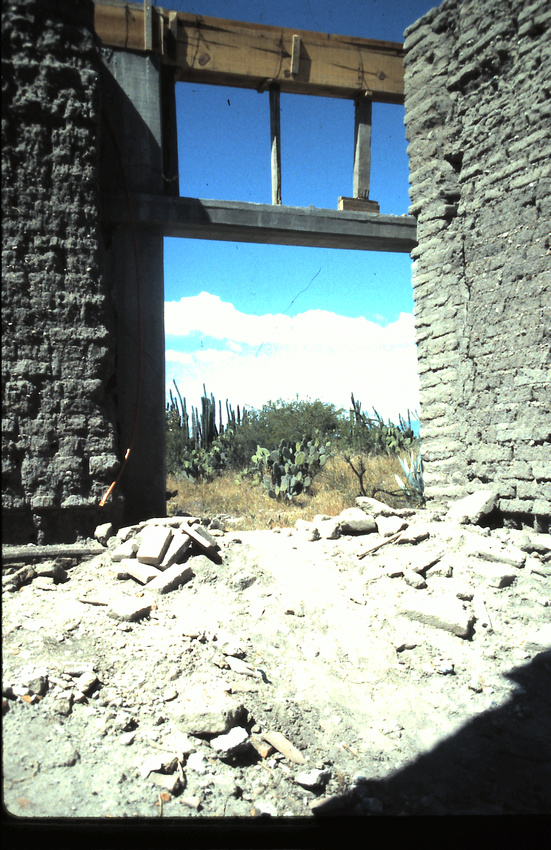
 That opening eventually looked like this.
That opening eventually looked like this.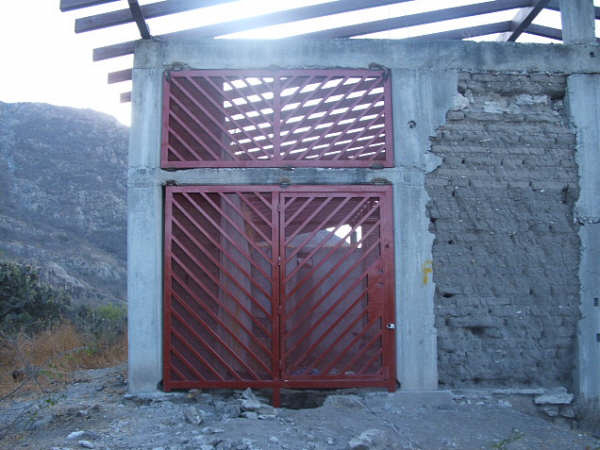

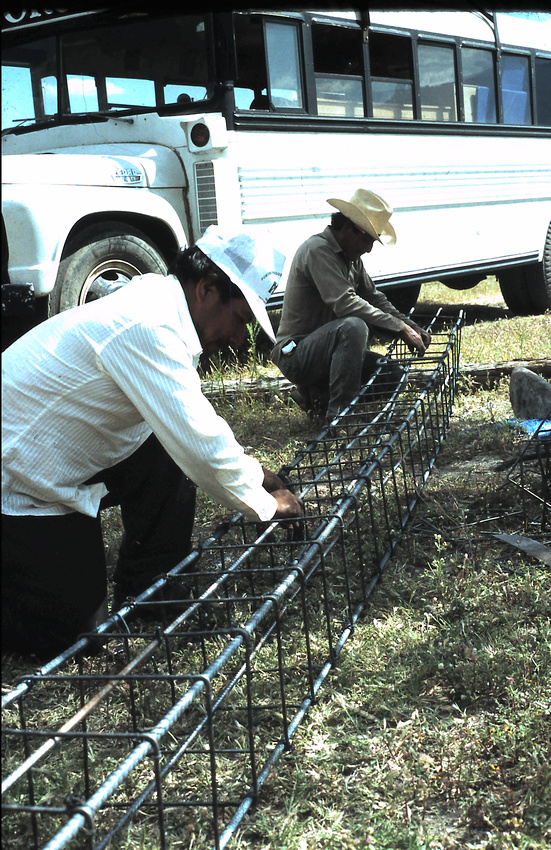

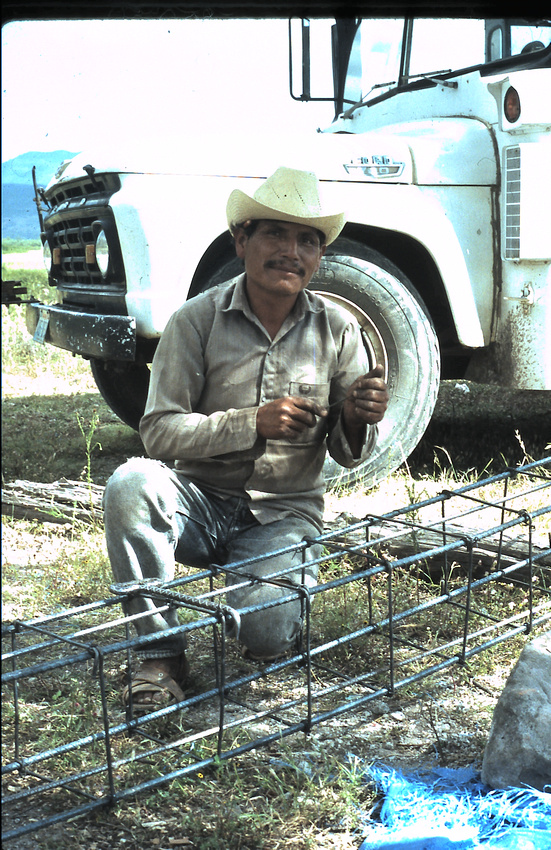



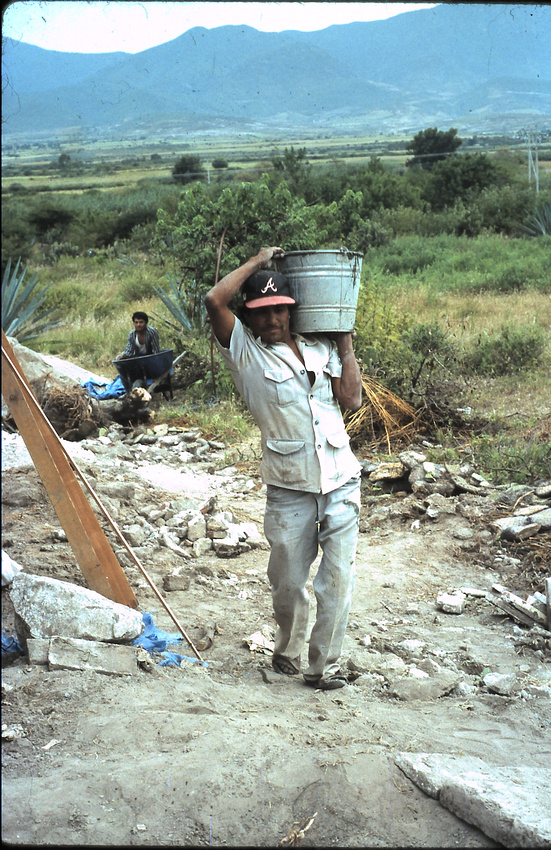



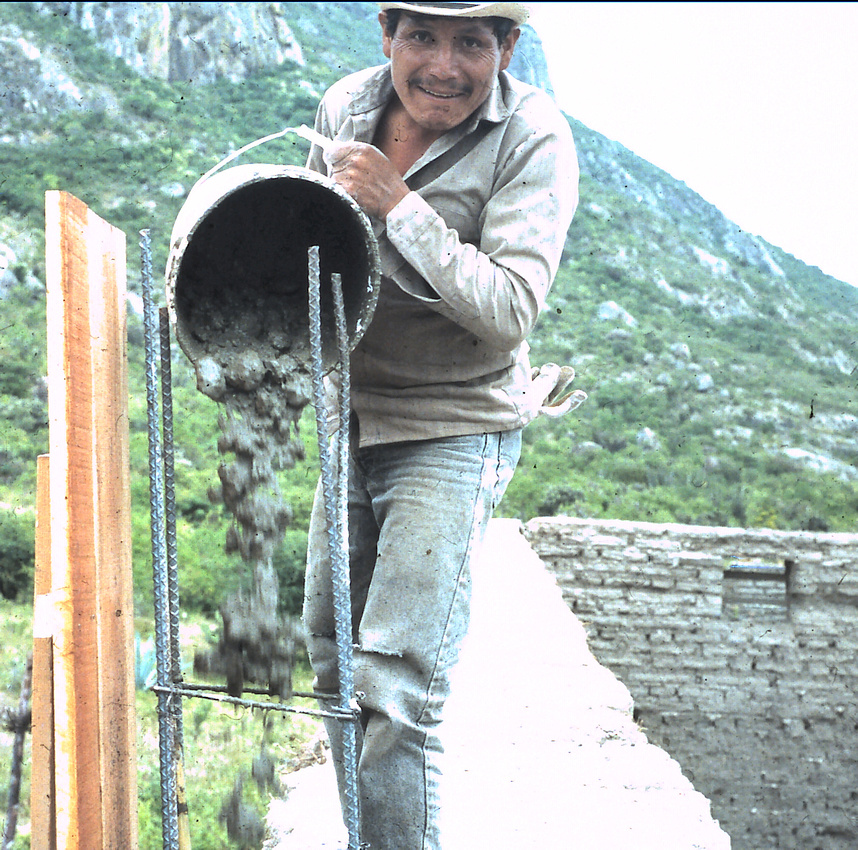

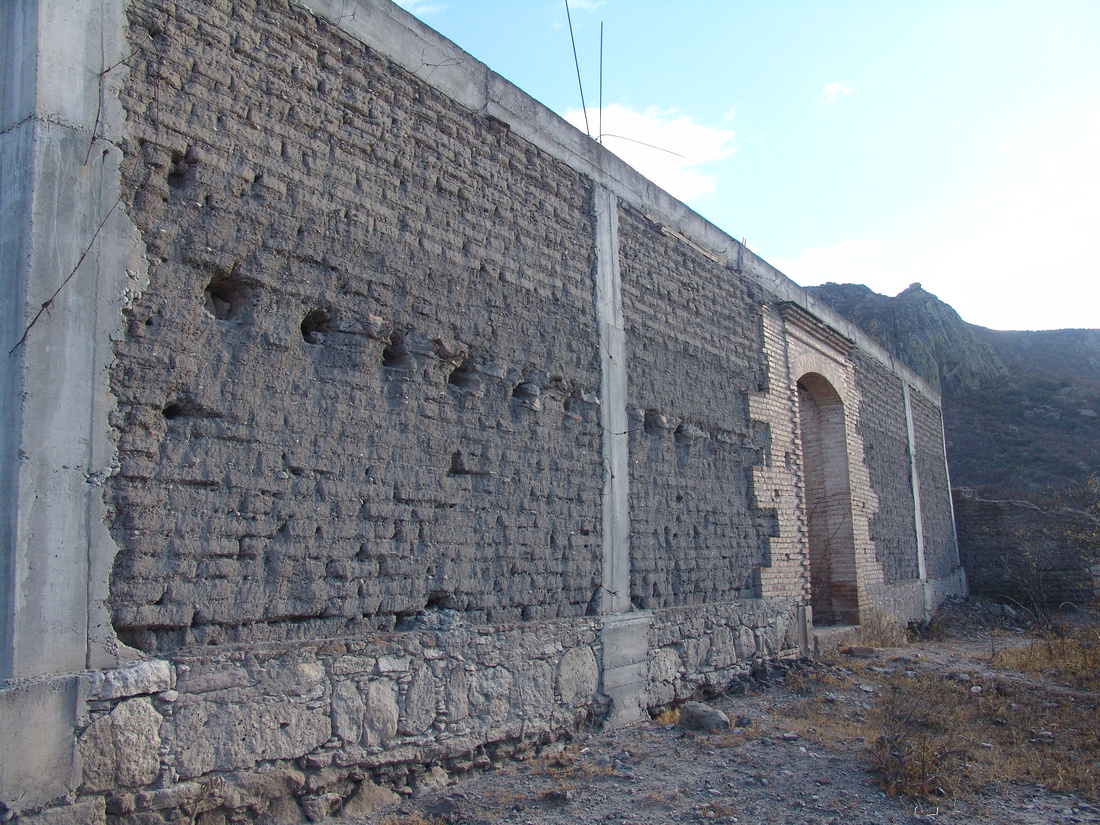

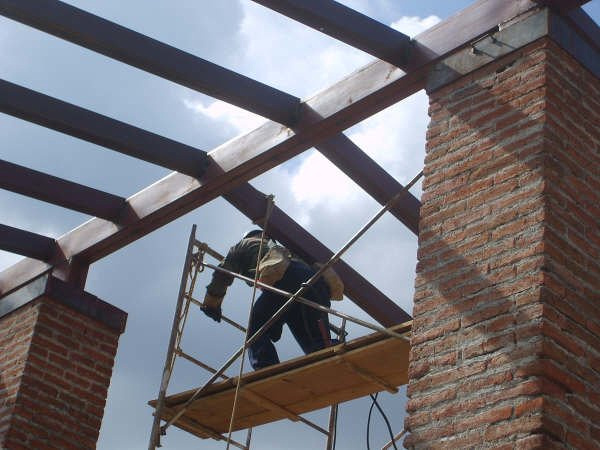

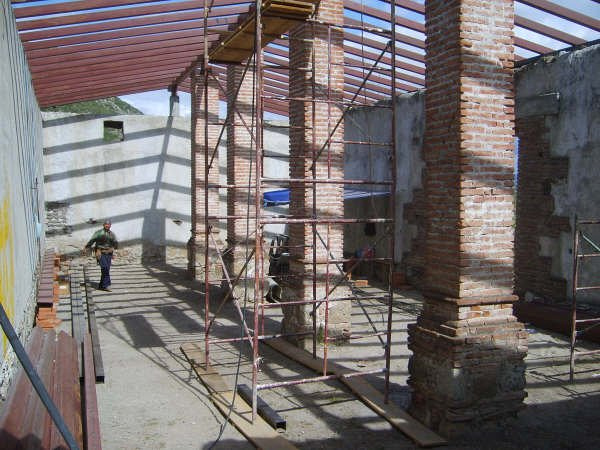




 Here are the gates! Front
Here are the gates! Front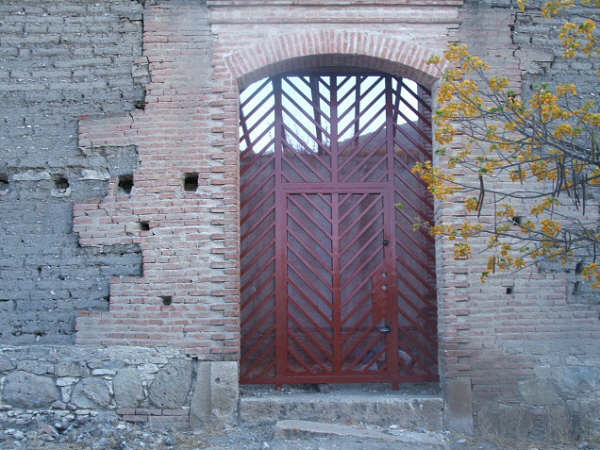

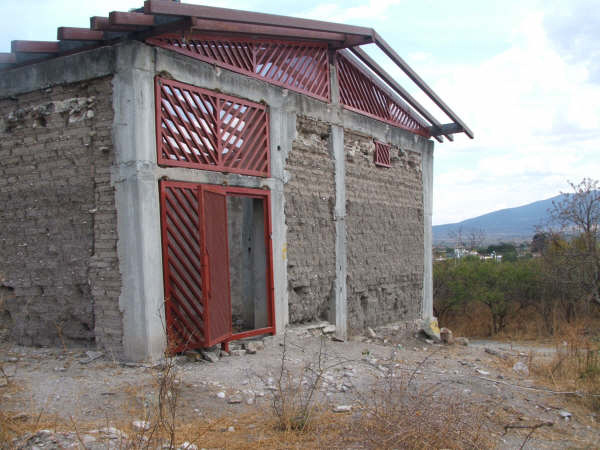
 500 boards were treated and screwed on top of the metal structure. The view from below.
500 boards were treated and screwed on top of the metal structure. The view from below.



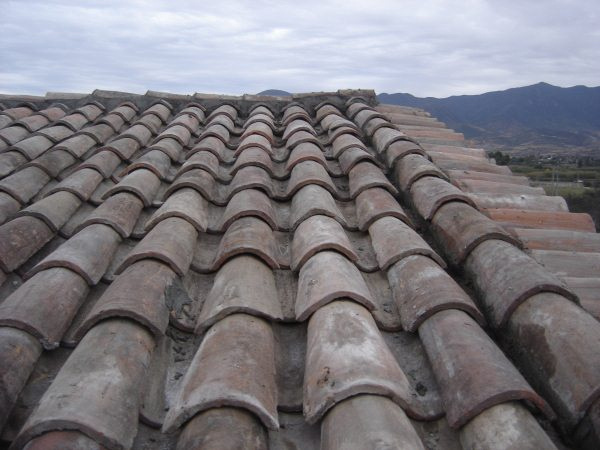
 The inside got a coat of cement to cover the adobe. It's called repello. All hoses and boxes for electricity are installed before the repello is applied.
The inside got a coat of cement to cover the adobe. It's called repello. All hoses and boxes for electricity are installed before the repello is applied.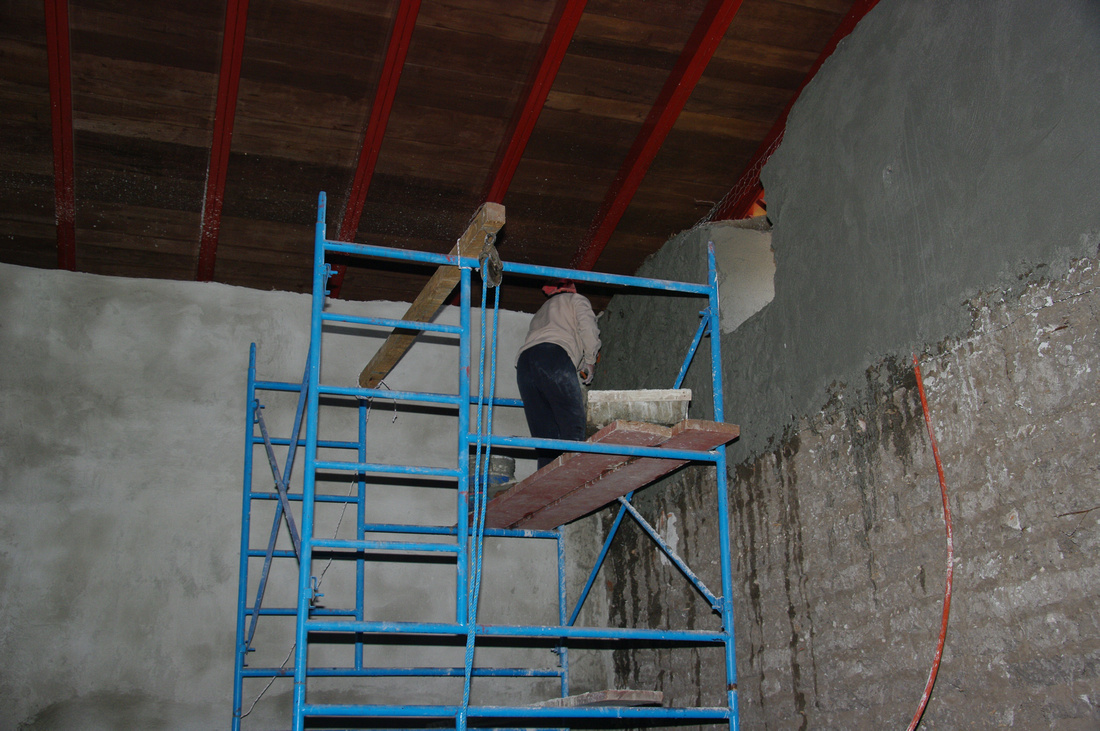

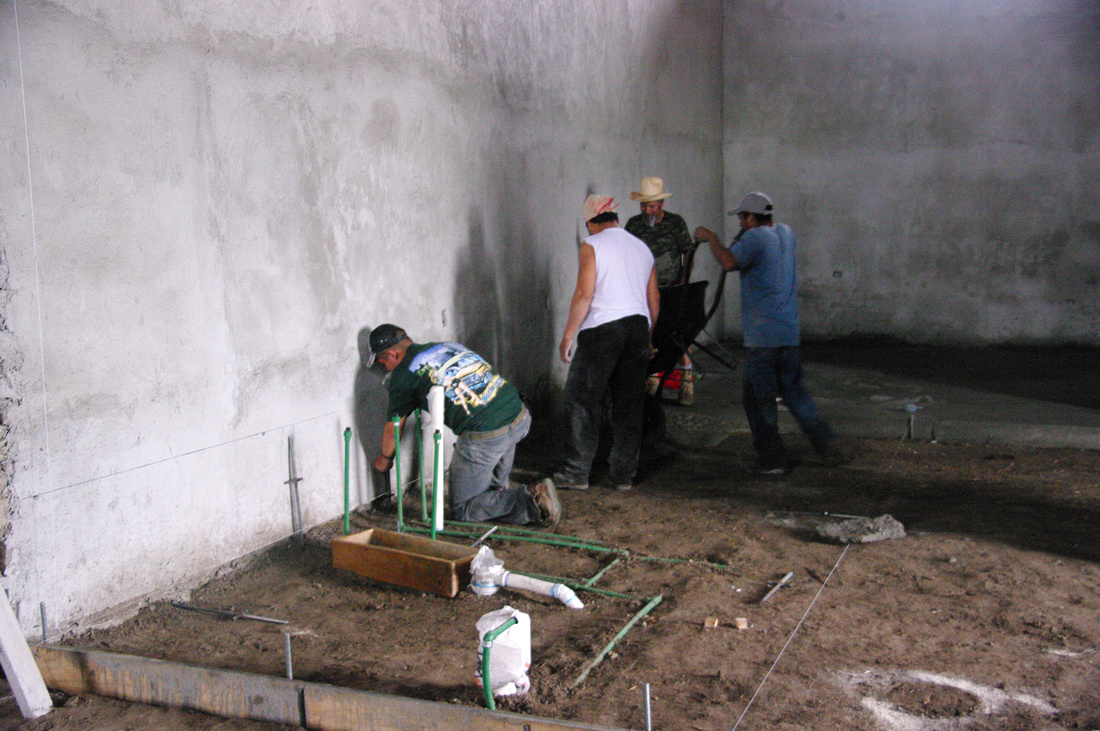



Sand and gravel are carried to the mixer by hand. It's backbreaking work. You can see in the background we had a portion of the land cleared.
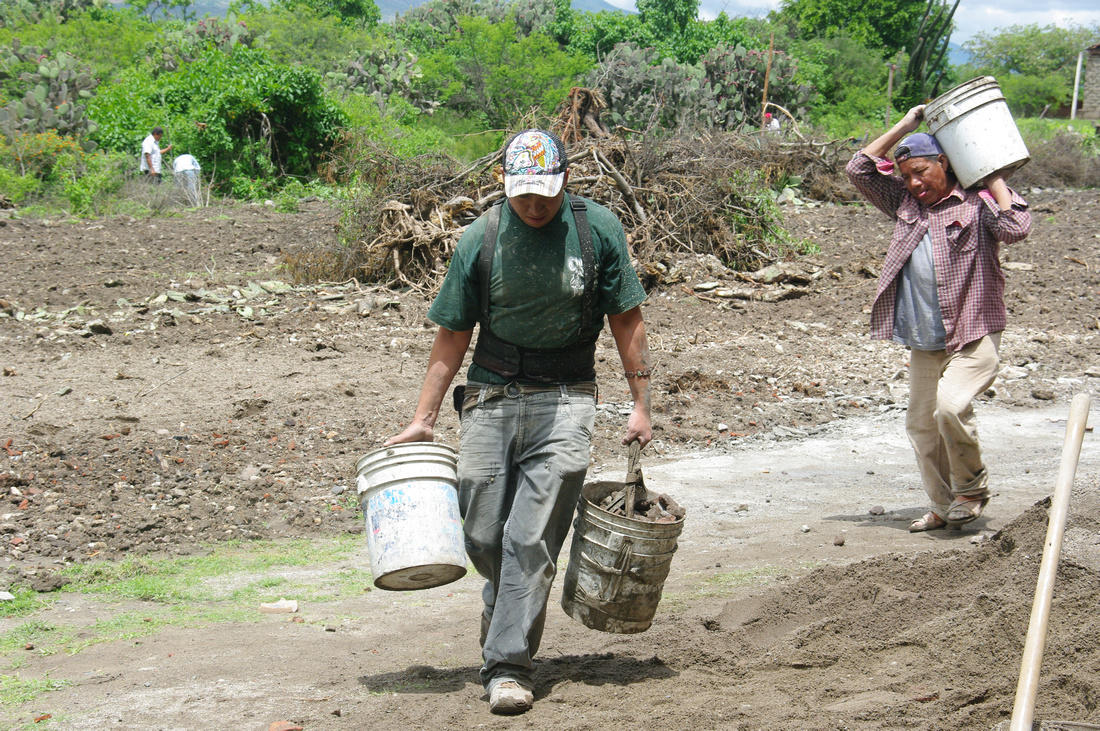
 The finished product!!!!!!! The floor to the patio comes later.
The finished product!!!!!!! The floor to the patio comes later.


Here we are after the floor was done
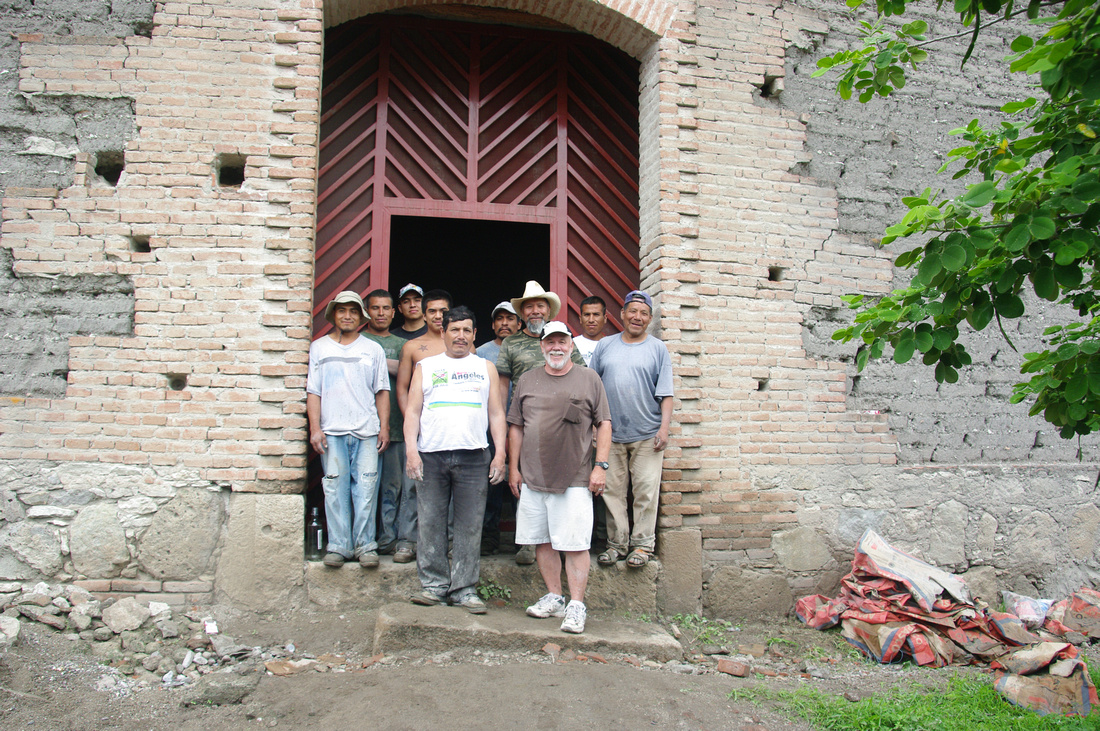

We broke from tradition and installed a sheet rock wall to separate the house from the patio. Much to the dismay of many of my friends.
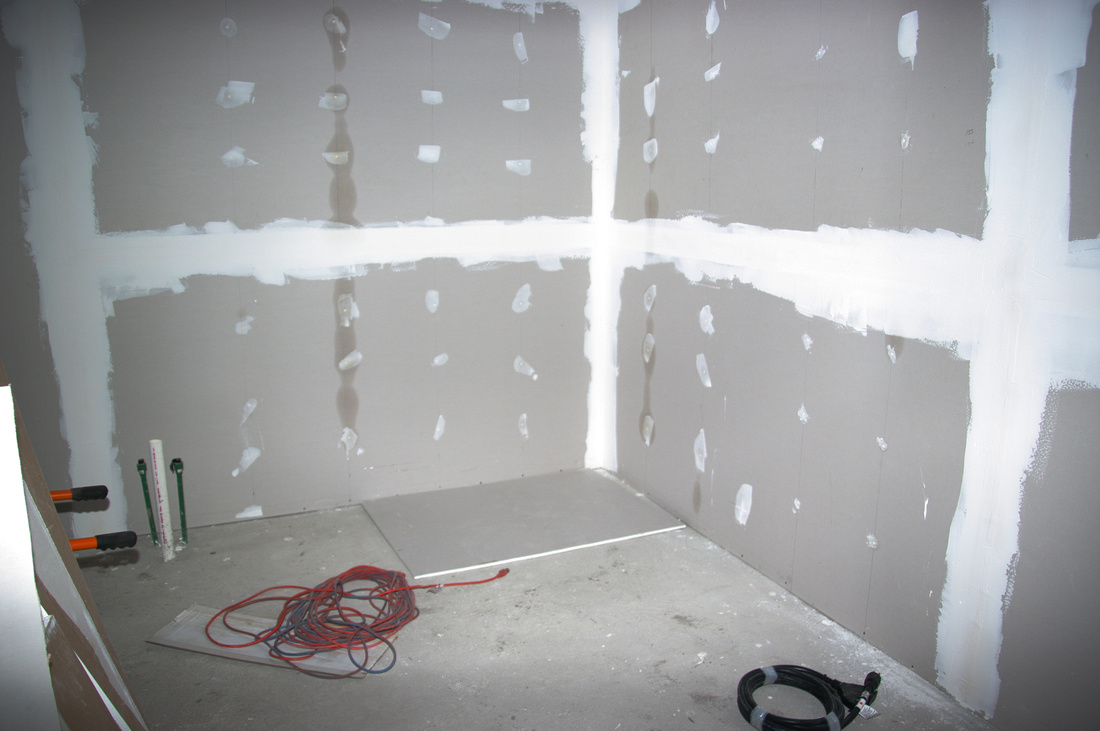

I wasn't here when the floor in the patio was poured but I was told that the cement was mixed outside and carried in by five gallon buckets. A friend took some photos for me.


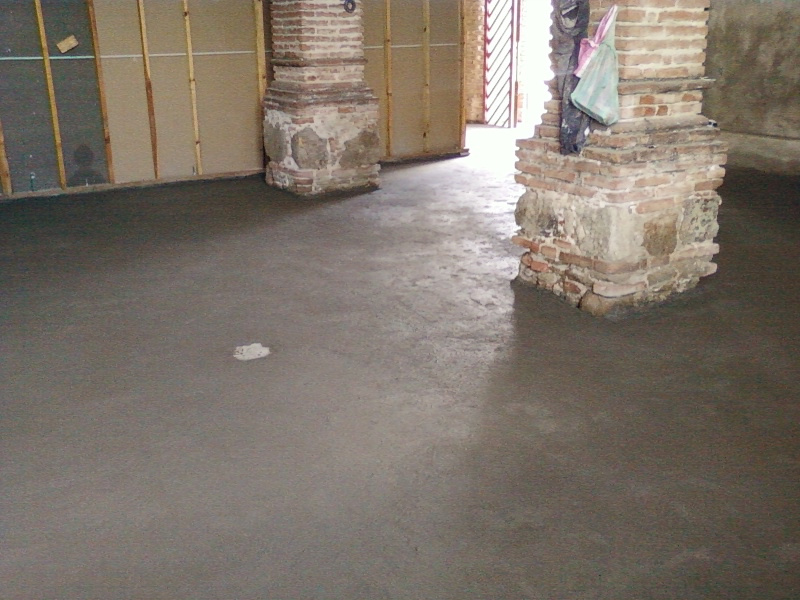
 Without dragging you through all of the other work that has been done here is where we are now. It's still a work in progress.
Without dragging you through all of the other work that has been done here is where we are now. It's still a work in progress.
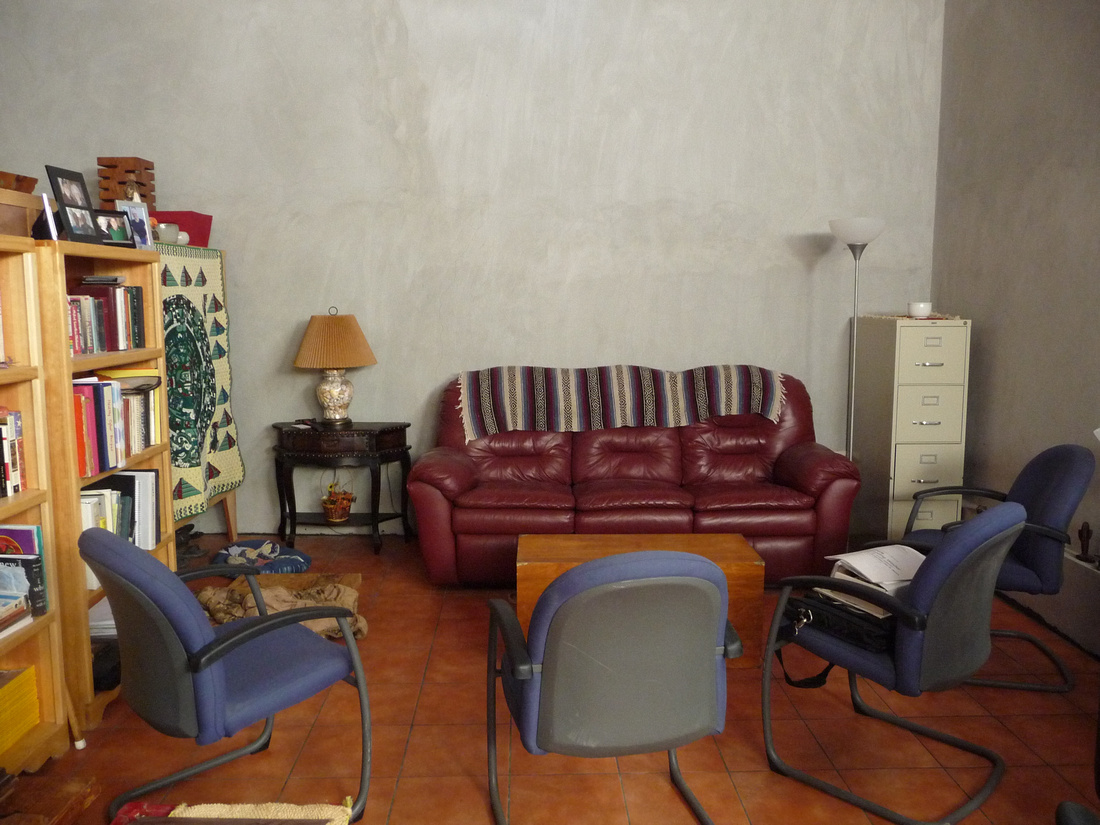

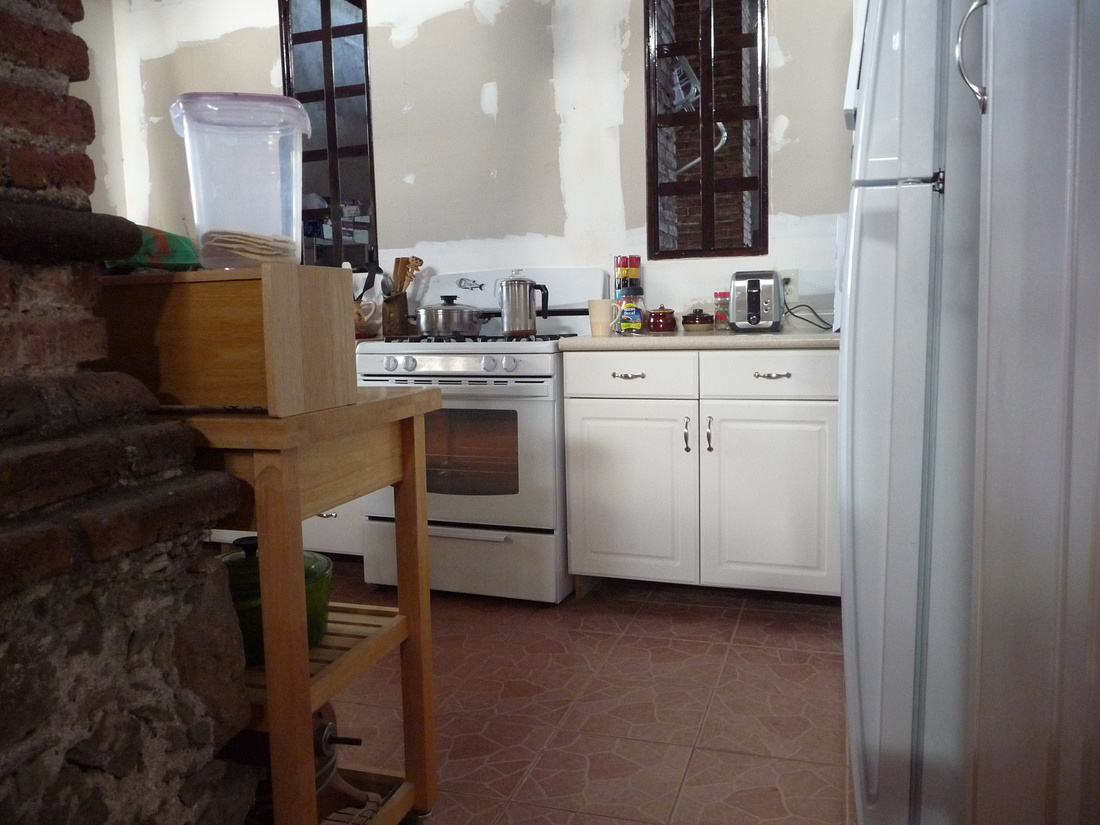



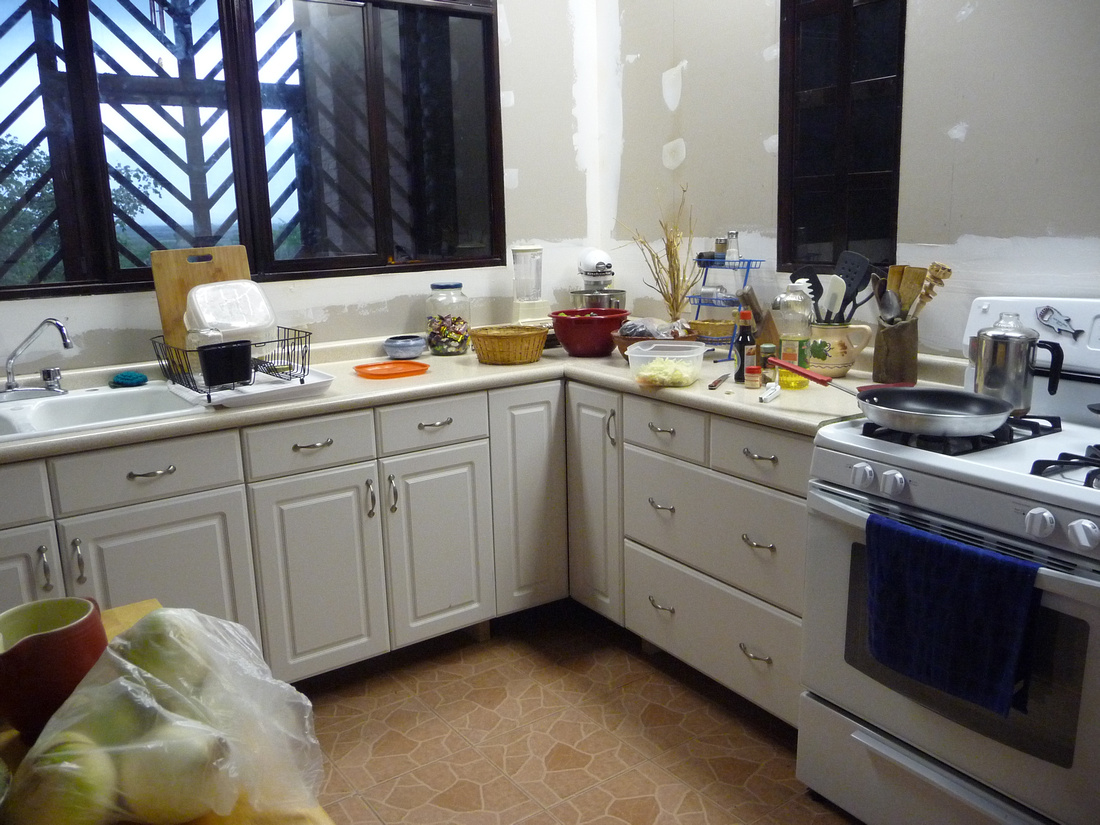

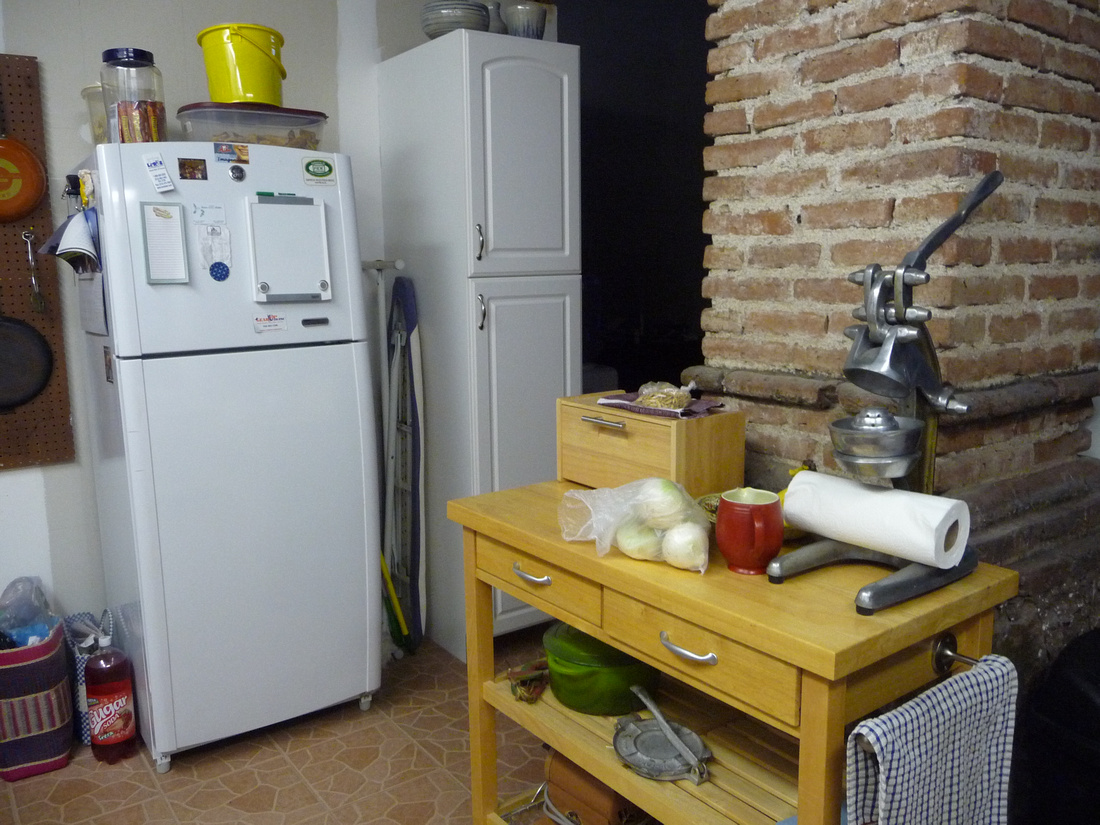



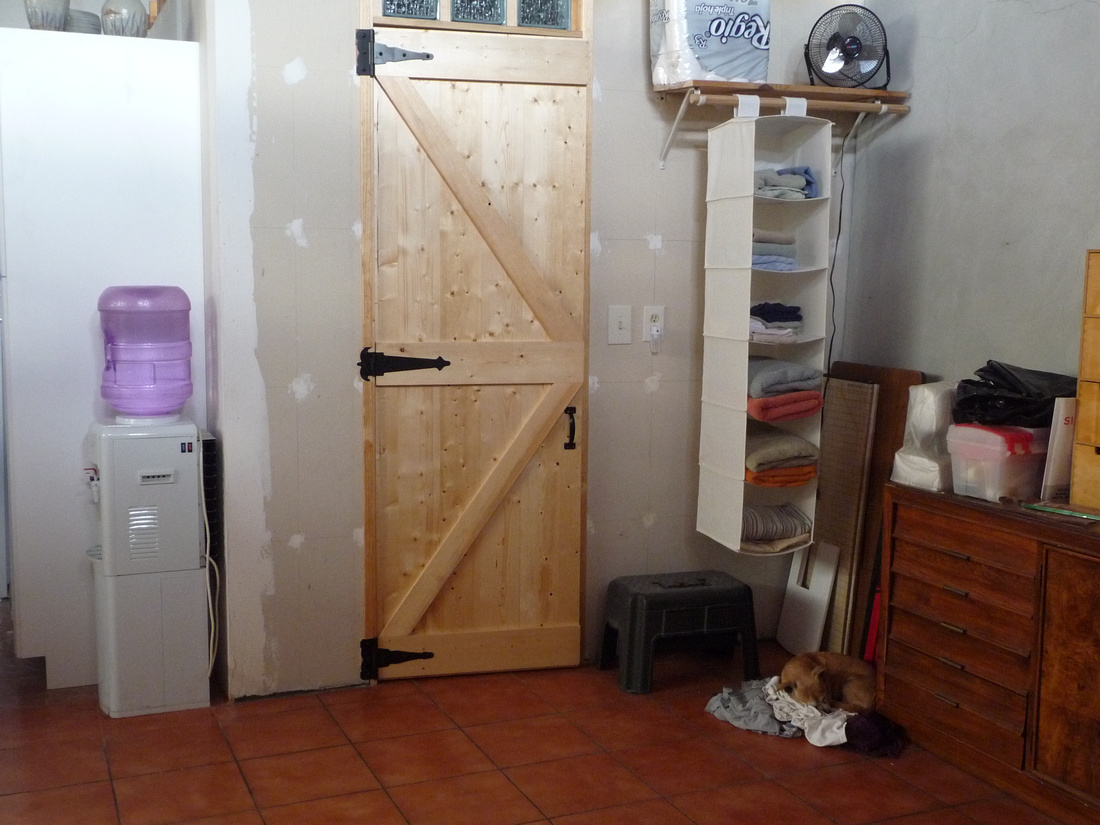

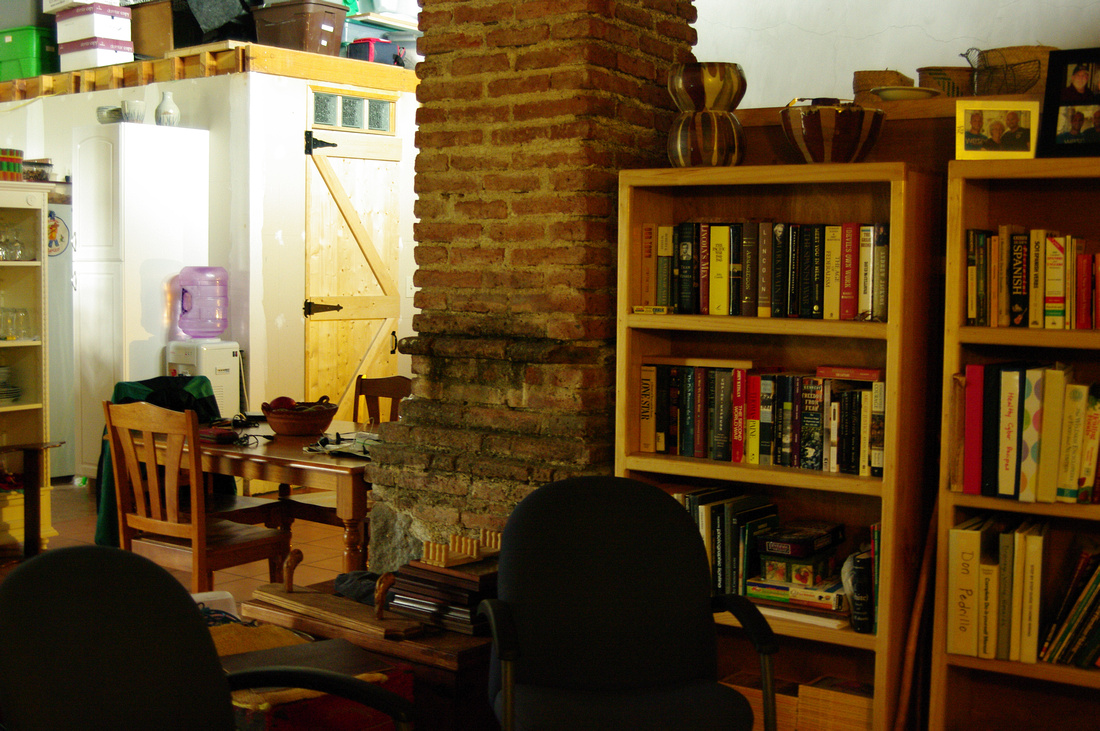

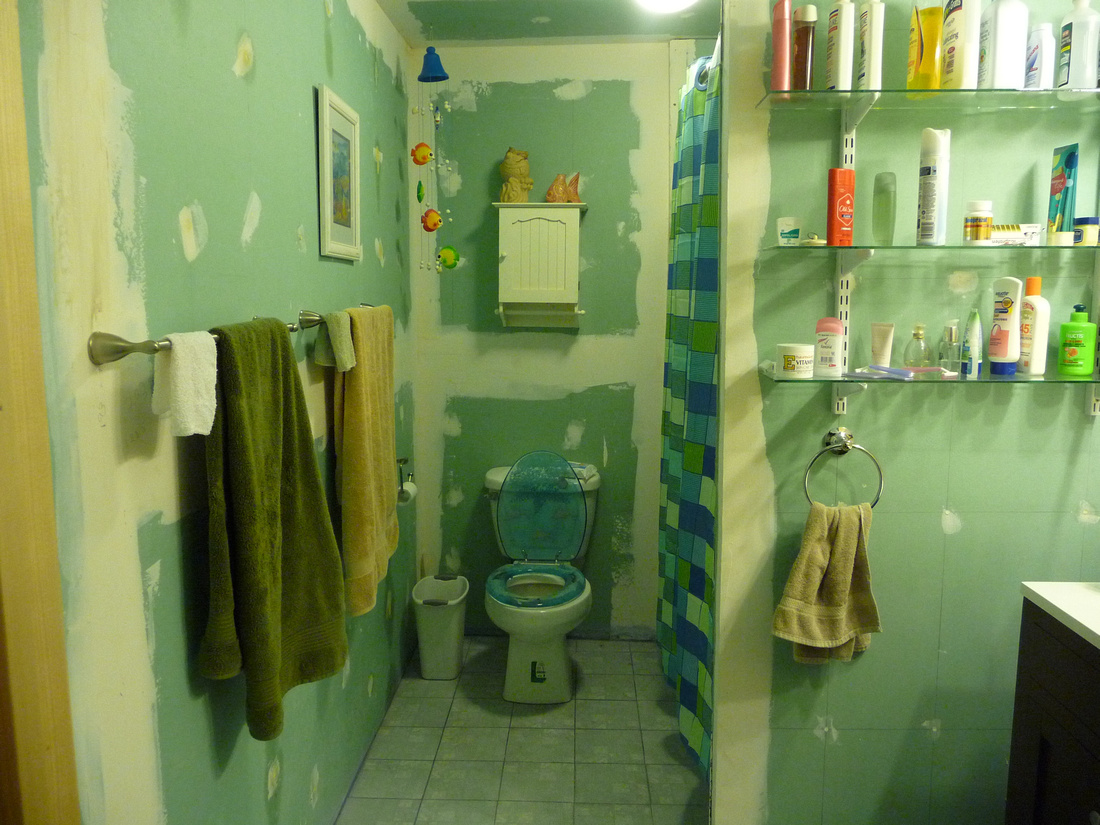



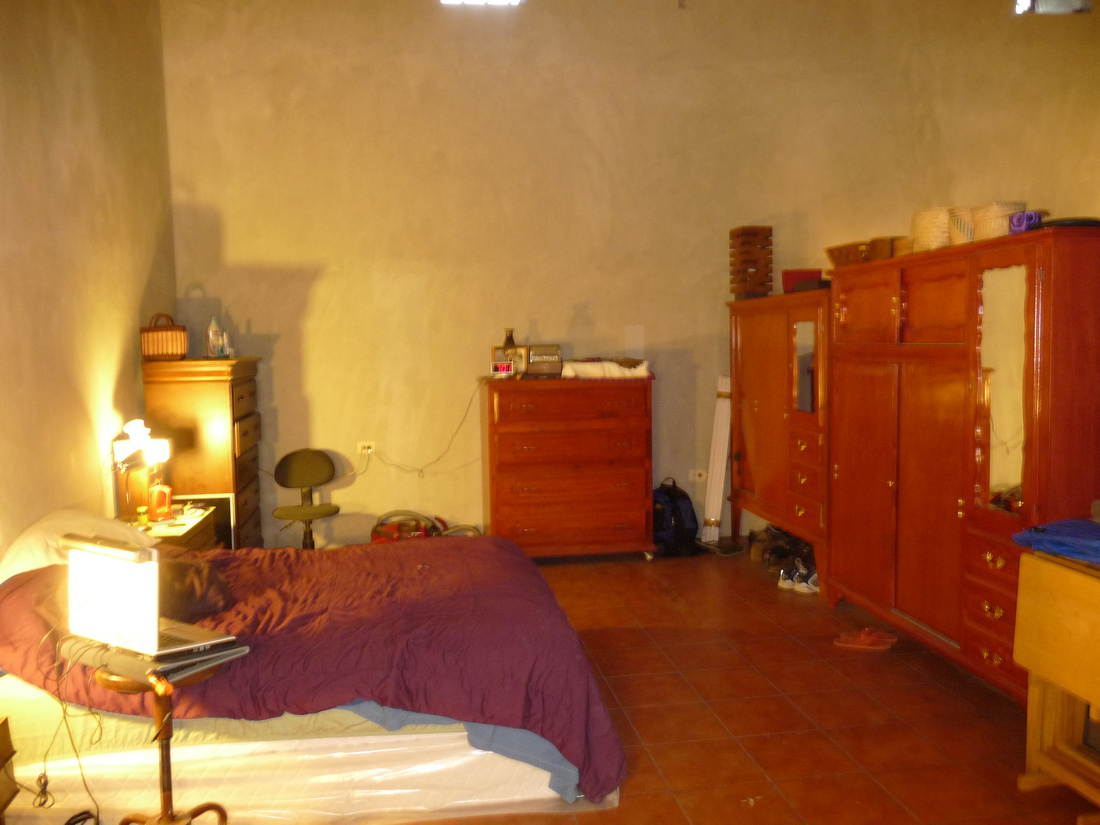

Inside the patio looking at the front door into the house.
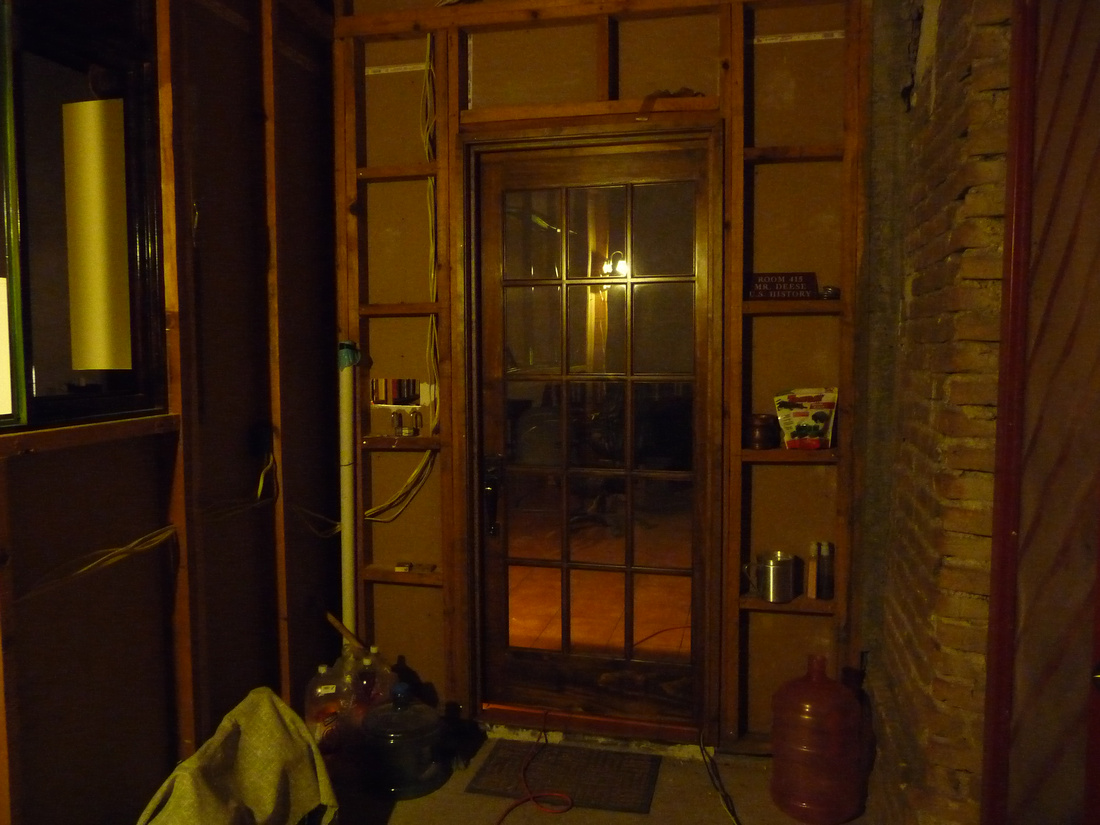

Beth and I are so thankful to have found Don Pedrillo. There is still much to do but we are reducing our workload and enjoying our friends more along with a little bit of exploring. Every day is an adventure. Regardless of what you hear about Mexico there are many wonderful people here living out their lives. We refuse to become embroiled in the politics of Mexico and must say it's a luxury to be distant from the politics of the United States. It's such a treasure to wake up in the morning and continue living our dream. The obstacles and challenges from living in another country are fascinating. Again we owe thanks to our wonderful friends for looking out for us. Sorry for the long posts. I'm so excited I can't help it!!!!!!!!!!!!!!!!!!!
1st post
Today is our 62nd day in Oaxaca and our 58th in Don Pedrillo. Our first days at Don Pedrillo were without water, power, or bathroom. We used candles at night, bathed at the home of friends, did our business in the woods, ate our meals in restaurants, used the generator to power tools, and had water trucked in. Needless to say, the first few days were very challenging.
Other than being stopped several times by the Federal Police our trip down was without incident. We were very apprehensive when we left because of the travel warnings due to the activities of the drug cartels. It seemed that everyone we talked to in Texas had a story of a friend of a friend being confronted in some degree by cartel members. As we pulled out of Matomoros we were hopeful but wary. It soon became obvious however that the highways seemed safe. There were literally hundreds of other travelers’ and the ominous presence of the Federal Police and Mexican Military.
The trip took three days. We were always in a hotel before dark. Because we’d made the trip several times in the past we knew the route well along with our favorite places to eat and sleep. Mickey and Yadi made the trip with us along with Polo and his wife Amparo, who’d driven their truck and trailer up to the boarder to help us move our things.
From Matamoros to San Luis Potosi, well, I can’t say much. But from San Luis to Oaxaca was beautiful. Also from San Luis south the roads are much better. Mostly freeway with at least two lanes each way with a divider.
Mexico’s gas stations are owned by the government. When we made our first trip in 1994 they were few and far between with minimal services. Today Pemex gas stations flood the highways. They are usually accompanied by a store. Many times you’ll find restaurants, Cappuccino outlets, gift stores, and a multitude of various types of vendors. Mexican gas prices don’t fluctuate like they do in the states. I compared prices the other day and found the price to be close to Texas prices.
Oaxaca is located about 900 miles from the southernmost point of Texas, (Brownsville). I included a map of Mexico with Oaxaca underlined in red.
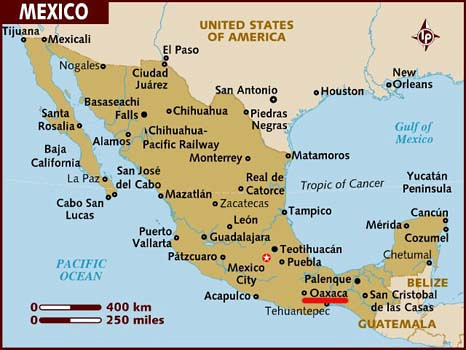

I’ve also included a map of the valley showing where we live in relation to local towns and villages. Don Pedrillo lies between Tlacolula and Mitla. It’s marked by a green arrow.


Most of our shopping is done in Tlacolula, a town of about 20,000 inhabitants. It hosts a fabulous outdoor market every Sunday. People come from the surrounding villages and towns to buy and sell. The market has gained worldwide recognition. It’s not unusual to hear several European languages spoken on any given Sunday. The market offers fruits and vegetables, meats, furniture, a variety of live animals, electric appliances, building material, local cuisine, clothing, shoes, and about everything else a family needs to survive. Beth and I choose to shop early and get done before the thousands of attendees arrive. Tlacolula is the county seat of the valley and is much more progressive than the surrounding towns and villages. Many of the people from nearby indigenous villages do their shopping in Tlacolula. Their traditional dress is a great contrast to many of the modern dressed residents of Tlacolula. It’s a classic scenario of old world new world. After countless visits to this town I have yet to tire of it’s uniqueness.
Mitla’s population is about 11,000. It’s also an international tourist site. Some of it’s archeological ruins have been dated back 10,000 years. Their Saturday market is also very popular but is a fraction of the size of Tlacolula’s. Walking the streets in Mitla at any hour is possible. Violent crime is almost nonexistent. Wonderful hand craft items can be purchased in Mitla including Mezcal, a strong drink made from the maguey plant. I believe the producers shoot for about 46% alcohol. The high from Mezcal is like no other drink. It’s almost drug like. Liters can be purchased for as little as two dollars a bottle so it is the drink of choice. Abuse is rampant. Three month binges are not unusual. Poverty and disparity are often motivating factors. While Tlacolula shuts down before dark for the most part. Many stores and restaurants remain open in Mitla until eleven or later. A walk during early night in Mitla is like a walk through small town America fifty years ago.
Don Pedrillo, the name of our home and the surrounding land, is an old Spanish hacienda. It was built sometime in the late sixteen hundreds. The building which we have converted into our home was the warehouse portion of the Hacienda. The walls are three feet thick and the roof at the peak is about twenty feet high. It has been an incredible experience turning those walls into a home. Much of the work was completely foreign to us. We have our friends to thank for their patience and advice. Some projects I refused to bend on. I was adamant about doing it my way. Consequently we’ve created a conglomeration of a mixed cultured dwelling. For several years one of my major preoccupations was staying cool. It turns out that keeping warm might be a greater concern. I am already considering having a wood stove built to remove the morning chill. It appears as though a range from the high sixties to the low seventies is going to be the average temperature inside the house regardless of the temperature outside.
Our lives are fuller than they have been in several years. Between working on our home, visiting and entertaining friends, exploring the area, adjusting to the culture, and giving sufficient attention to our dogs Scooter and Einstein our days are incredibly satisfying. We have high speed internet and are using Skype to communicate along with Facebook and email. We look forward to visits from friends and family.